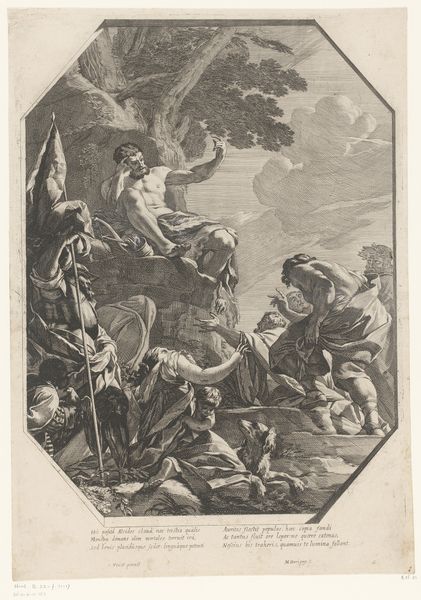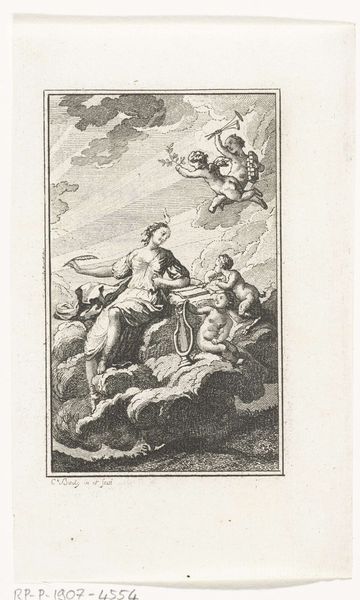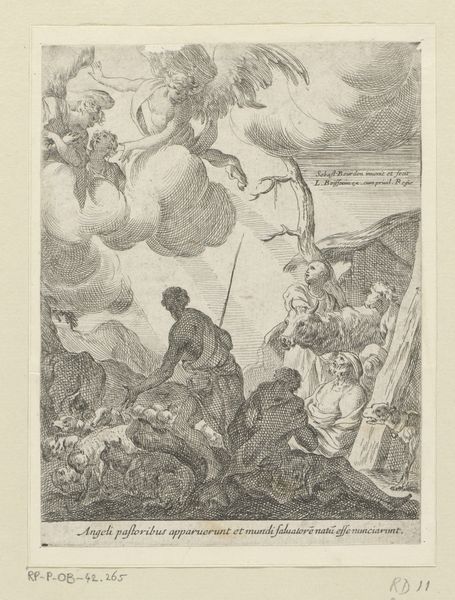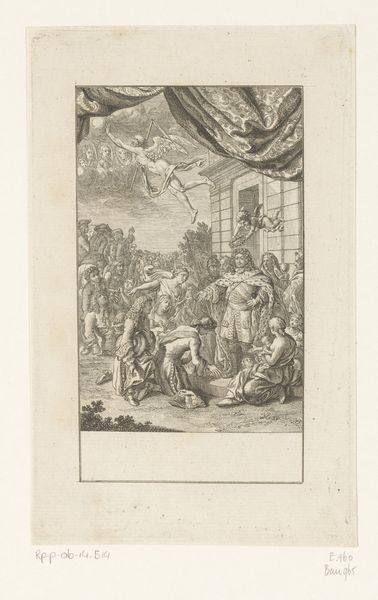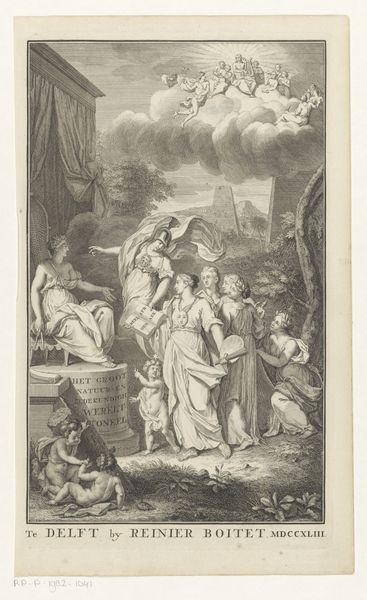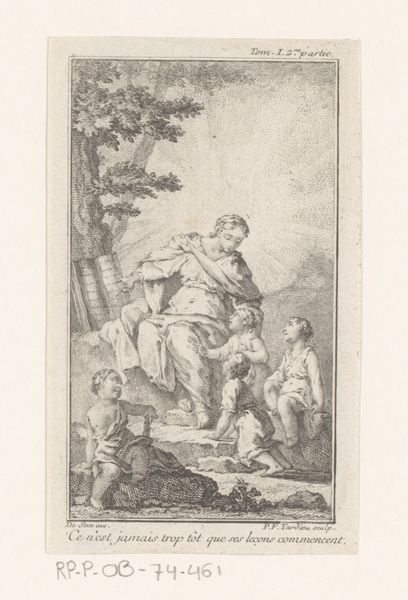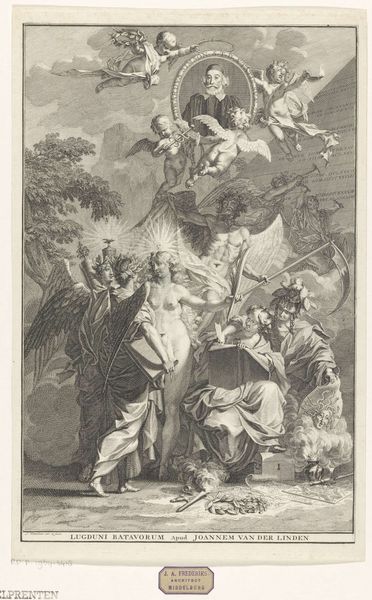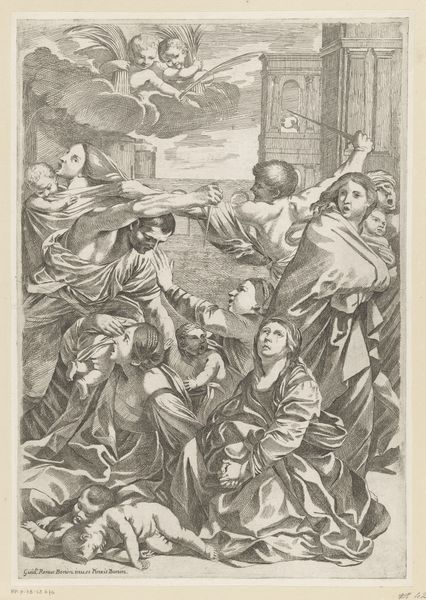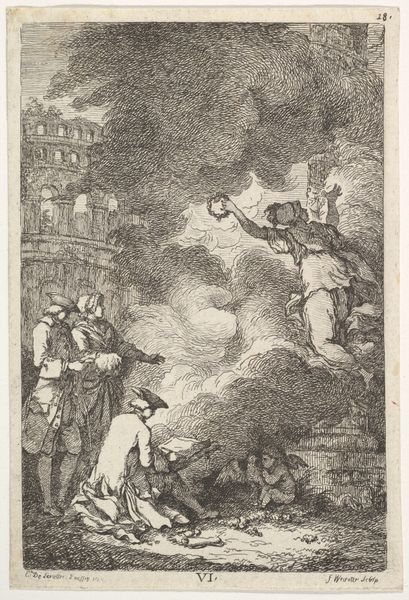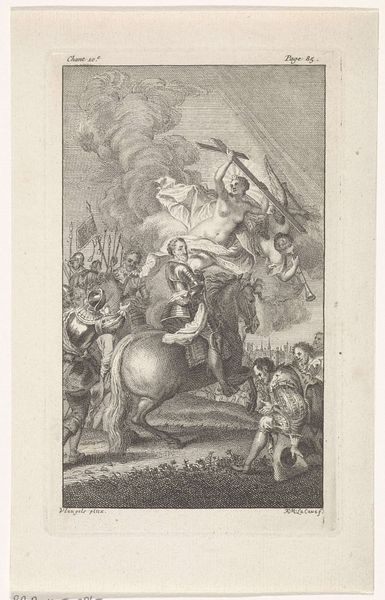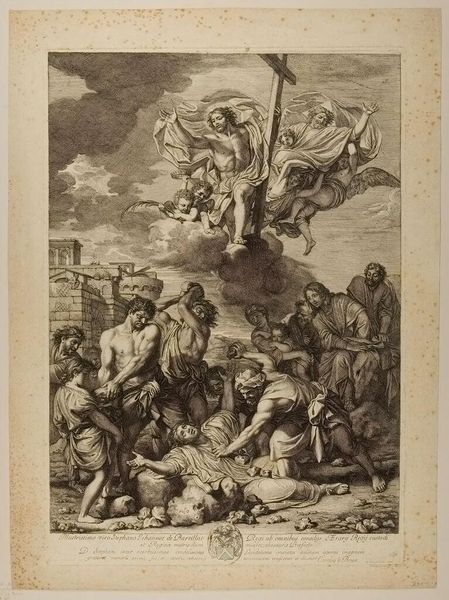
Dimensions: 130 × 87 mm (image); 137 × 94 mm (plate); 162 × 115 mm (sheet)
Copyright: Public Domain
Editor: So, this is "Plate from, Nella Venuta" created by Franz Edmund Weirotter in 1764. It looks like an etching or engraving on paper. It strikes me as theatrical, with its swirling clouds and figures in period costume. What's your take on it? Curator: Immediately I see the materiality of the print itself as a manufactured object, part of a larger system of production and dissemination. Consider the labor involved: the engraver, the printer, the publisher, the distribution networks. Who was consuming these images and why? What kind of social capital did ownership of prints like these represent? The image depicts the *idea* of baroque, but *who* produced the art object, and what processes did they follow, fascinate me even more. Editor: That's interesting, I hadn't thought about it that way. So, you’re less focused on the figures themselves and more on how the print came to exist as an object? Curator: Precisely! Notice the etching technique. It's not just about rendering the image, but also about the material transformation that the copper plate undergoes, and then the paper when the two make contact under great force during the printing process. The etching process involved tools and materials and skill sets. And consider how the narrative and style itself -- Baroque-- became "manufactured" into easily dispersed forms for mass consumption. Editor: So, thinking about who had access to this image, how do you think it shaped the perception of wealth and status during that time? Curator: Good question. It allowed for the democratisation of visual culture to some degree, yes, but always in relation to consumption patterns and displays of socio-economic standing. In short, possessing such prints communicated a sense of having "good taste" and access to higher culture. Editor: I see, that perspective really opens up new avenues for thinking about art. Thanks for the insight! Curator: My pleasure. Focusing on the production and materiality can really revolutionize how you analyze any artwork.
Comments
No comments
Be the first to comment and join the conversation on the ultimate creative platform.
